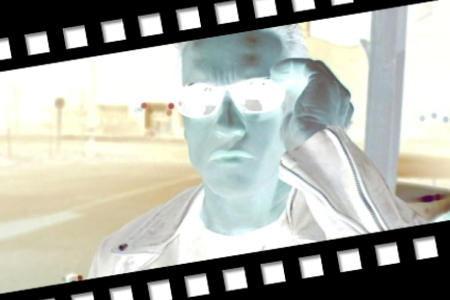CINEMANIA: Guess the movie title
See negative of movie scene and guess the title. Length of words in solution: 10
A lady about 8 months pregnant got on a bus...
The man seemed more amused. When on the fourth move, the man burst out laughing, she complained to the driver and he had the man arrested.
The case came up in court. The judge asked the man (about 20 years old) what he had to say for himself. The young man replied, Well your Honor, it was like this : When the lady got on the bus, I couldn’t help but notice her condition. She sat down under a sign that said, “The Double Mint Twins are coming” and I grinned.
Then she moved and sat under a sign that said, “Logan’s Liniment will reduce the swelling”, and I had to smile. Then she placed herself under a deodorant sign that said, “William’s Big Stick Did the Trick”, and I could hardly contain myself.
But, Your Honor, when she moved the fourth time and sat under a sign that said, “Goodyear Rubber could have prevented this Accident”, I just lost it.
“CASE DISMISSED !!"

